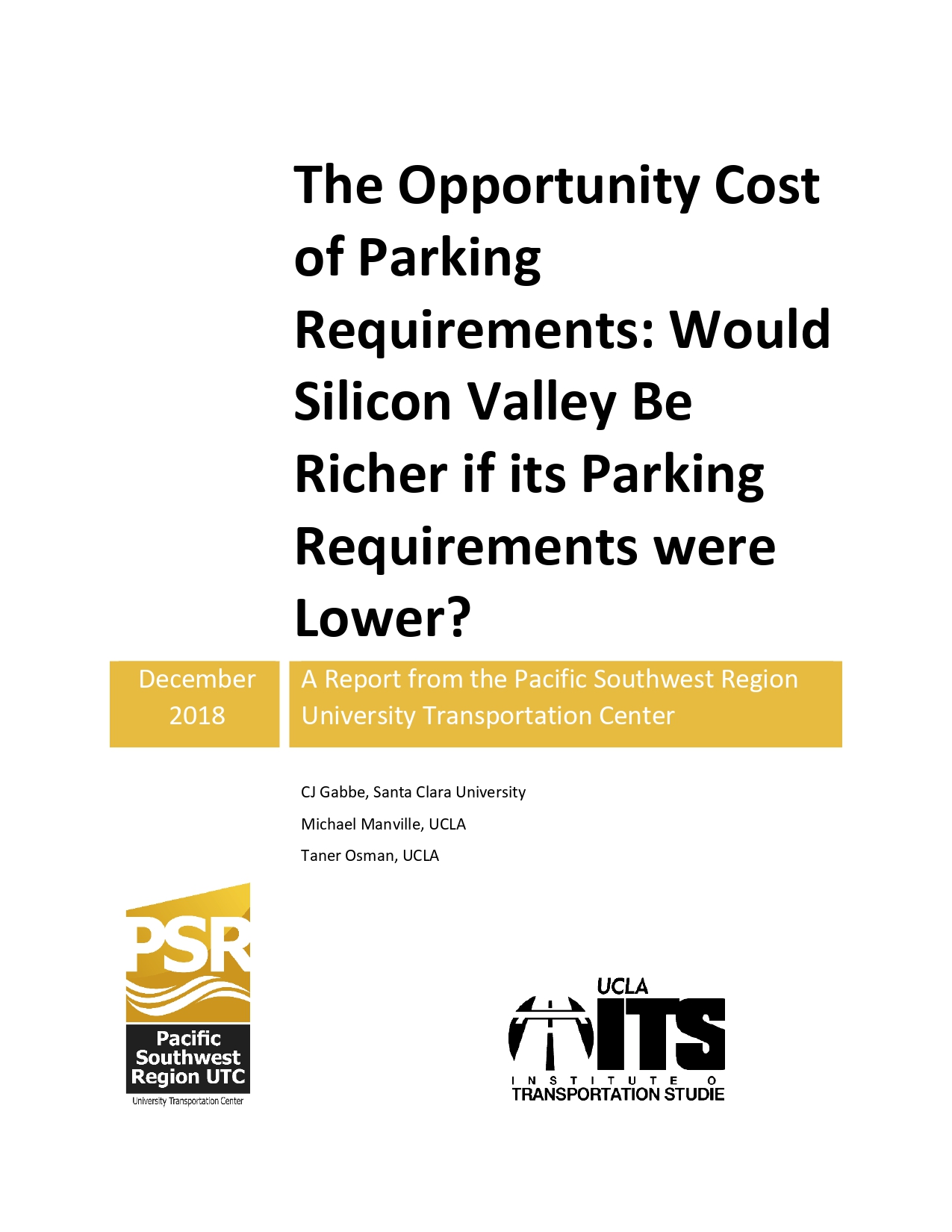Date: December 1, 2018
Author(s): Michael Manville, CJ Gabbe, Taner Osman
Abstract
We estimate the off-street parking supply of the seven most economically productive cities in Santa Clara County, California, better known as Silicon Valley. Using assessor data, municipal zoning data, and visual inspection with aerial imagery, we estimate that about 14 percent of the land area in these cities is devoted to parking, and that over half the average commercial parcel is parking space. This latter fact suggests that minimum parking requirements, if binding, could depress Silicon Valley’s commercial and industrial densities, and thus its productivity. In an exploratory empirical exercise, we simulate a reduction in parking requirements from the year 2000 forward. and show that under conservative assumptions the region could have added space for an additional 12,886 jobs, which is 43 percent of the actual job growth that occurred during that time. These additional jobs would be disproportionately located in the region’s highest-wage zip codes, further implying a large productivity gain.
About the Project
A growing consensus among economists and economic geographers suggests that America’s most constrained housing markets, and in particular the constrained housing markets on California’s coast, impose high costs not just on people in those markets but on the nation as a whole, by inhibiting migration and placing a drag on productivity. Strict zoning regulations prevent people from moving to areas where they would be most productive, imposing costs that are quiet and atomized but that collectively are large. Despite gaining increasing attention in the last ten years, parking requirements remain relatively overlooked in the literature on land use restrictions. Existing attempts to quantify land use restrictiveness do not measure the stringency of minimum parking requirements, even though parking requirements are often the binding constraint on dense development.The research team proposes examining the relationship between minimum parking requirements, urban land markets, and travel behavior, using Silicon Valley as a case study. The team will specifically examine how minimum parking requirements: (1) Shape the locations and characteristics of new development, (2) Distort the location of firms and weaken agglomeration economies, and (3) Make driving less expensive.


